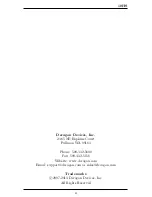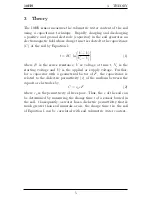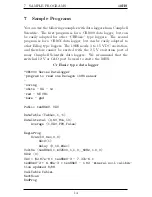
10HS
4
INSTALLING THE SENSOR
Excavate a hole or trench a few centimeters deeper than the depth
at which the sensor is to be installed. At the installation depth,
shave off some soil from the vertical soil face exposing undisturbed
soil. Insert the sensor into the undisturbed soil face until the entire
sensing portion of the 10HS is inserted. The tip of each prong has
been sharpened to make it easier to push the sensor in - be careful
with the sharp tips! Backfill the trench taking care to pack the soil
back to natural bulk density around the black plastic portion of the
10HS.
Method 2. Vertical Installation
Auger a 4 inch hole to the depth at which the sensor is to be in-
stalled. Insert the sensor into the undisturbed soil at the bottom
of the auger hole using your hand or any other implement that will
guide the sensor into the soil at the bottom of the hole. Many peo-
ple have used a simple piece of PVC pipe with a notch cut in the
end for the sensor to sit in, with the sensor cable routed inside the
pipe. After inserting the sensor, remove the installation device and
backfill the hole taking care to pack the soil back to natural bulk
density while not damaging the black plastic portion of the sensor of
the sensor cable in the process.
With either of these methods, the sensor may still be difficult to
insert into extremely compact or dry soil.
Note: Never pound the sensor into the soil! If you have difficulty
inserting the sensor, you may need to wet the soil.
This will obviously result in inaccurate VWC measurements until
the water added during installing redistributes into the surrounding
soil.
Orientation
The sensor can be oriented in any direction.
However, orienting
the flat side perpendicular to the surface of the soil will minimize
7







































